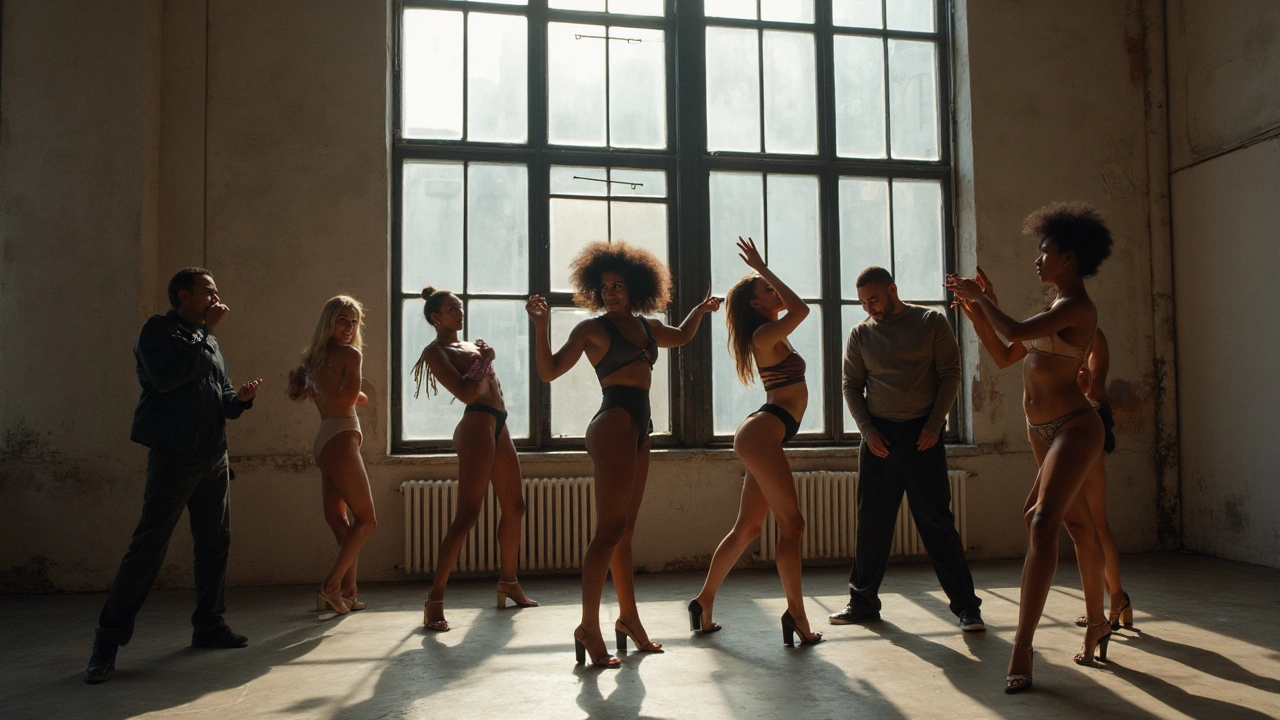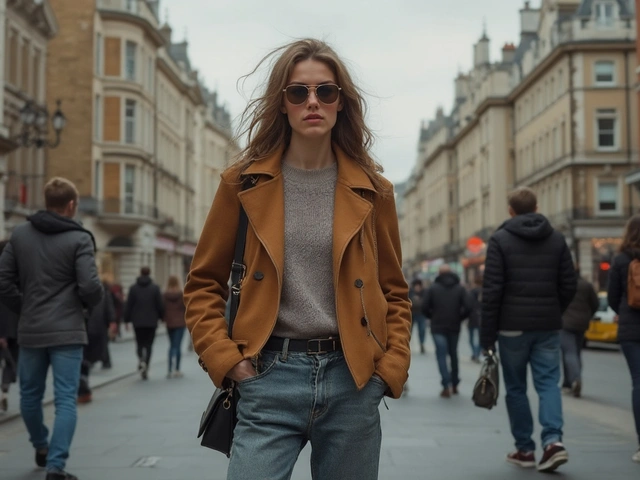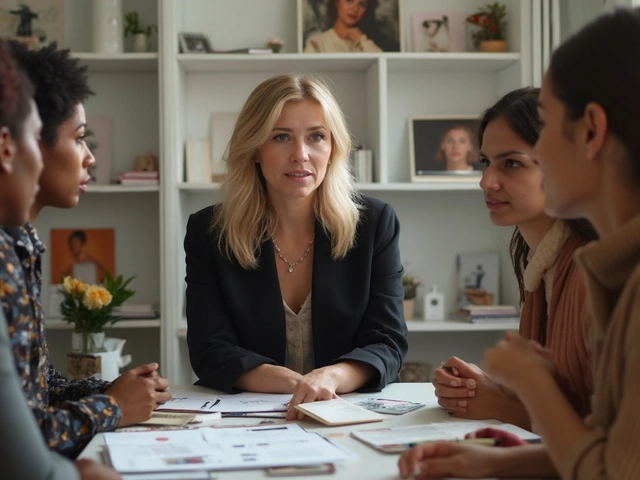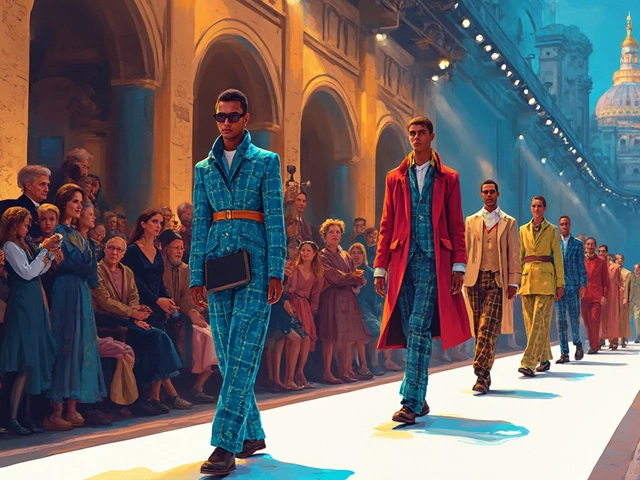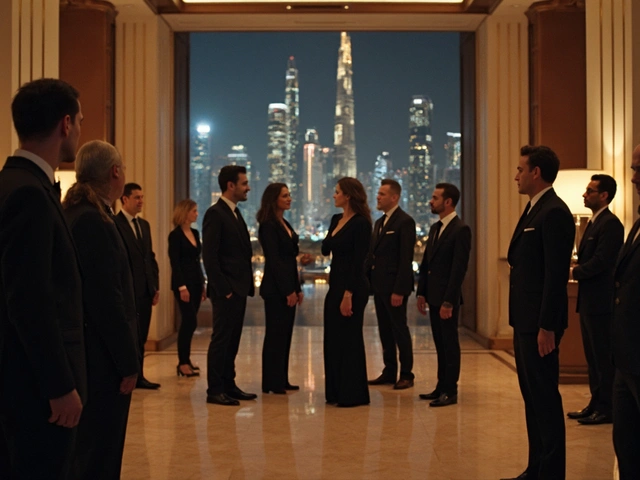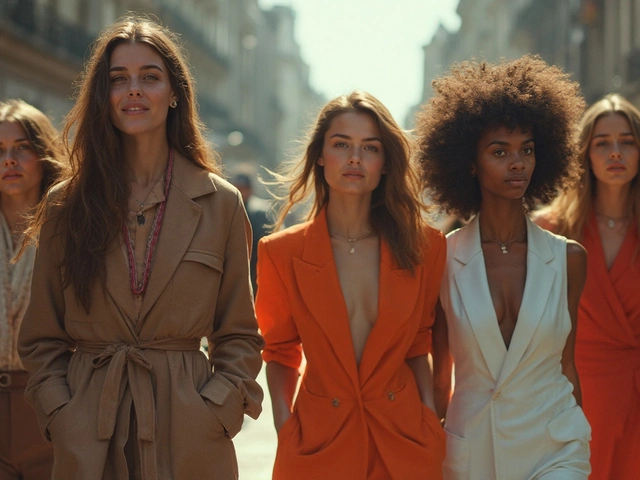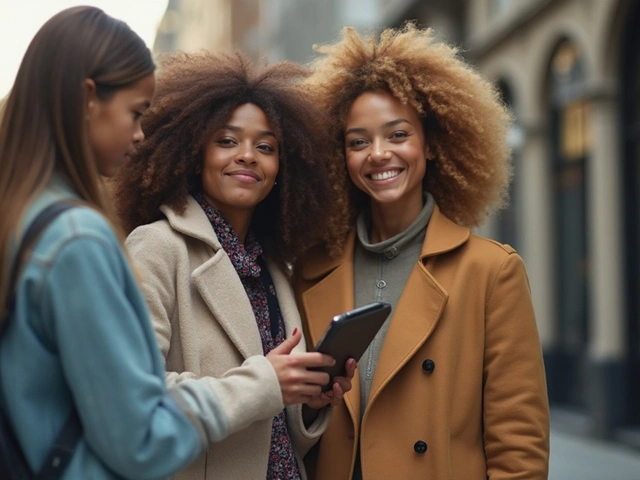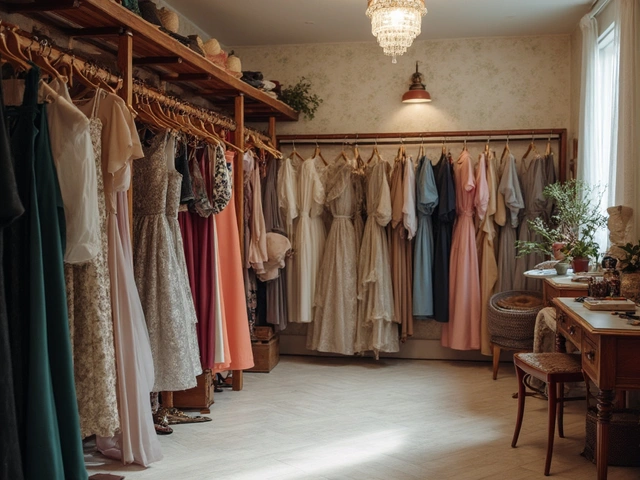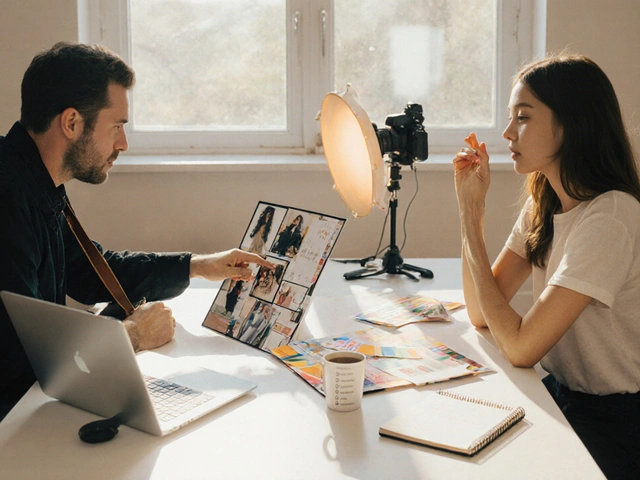The industry's worst-kept secret? Almost everyone can spot a 'model pose' from a mile away—shoulders angled just so, hands styled with choreographed delicacy, faces turned with the familiar, polite fierceness that's been echoed since the days of Cindy, Naomi, and Linda. Boring? Maybe not at first, but after your third scroll through identical feeds on Instagram, you start to ache for something—anything—that feels bold, real, and alive. In 2024, something new started brewing. Models and photographers began to ditch stiff perfection for something with a bit more soul: poses that tell stories, stir emotion, and even embrace awkwardness.
The Evolution of Model Posing
Pasting on a practiced smize used to be the golden ticket. Look back at catalogs from the late 90s: the angles are precise but rarely personal. Fast-forward to today and you'll find faces twisted in laughter, bodies mid-leap, hands thrown high, or models slouching, sprawled, or upside down. Why the shift? Social media has changed everything. Audiences crave authenticity. Studies from the British Journal of Photography in 2023 found audiences linger 37% longer on images that look candid versus traditional stances. Fashion houses are catching on—look at the Spring 2025 Prada runway campaign, where every model had full creative control of their body language. Prada reported a 45% increase in engagement for these posts.
Breaking the mold means breaking the rules. Legendary photographer Peter Lindbergh, years before his passing, insisted, 'Imperfection is beauty,' a mantra now echoed by top agencies in London. The new wave is all about movement, interaction, and letting models express something personal—even if it means scrapping the shot list. Sometimes the magic happens after the director yells 'cut.'
Techniques for Breaking the Mold on Set
So how do you create photos that stand out from the sea of sameness? Start by ditching the usual cues ('Chin down, eyes here, hand on hip') and encourage play. Movements borrowed from dance, theater, or even sports can turn routine frames into something electric. Try these ideas out next shoot:
- Movement — Have models walk, jump, spin, stretch, or interact with their surroundings. Ask them to narrate a scene through their body, not just their face.
- Connection — Whether it’s holding their own clothes, touching their hair, or leaning against a textured wall, physical interaction deepens realism. Bring in props, or let models lean on each other for group shots.
- Anticipation — Instead of snapping at the count of three, capture moments just before or after an intended pose. These in-between seconds are often where authentic magic glows.
- Storytelling — Build a story with each frame. For example: 'You’ve just been caught in a sudden rain, but you’re delighted.' Let the model react honestly.
- Imperfection — It’s okay if hair is out of place or a foot is awkwardly angled. Audiences connect with honesty, not polished perfection.
London-based photographer Olivia Rose swears by mood boards built from art, film stills, and found objects—not just fashion magazines. This way, every shoot feels fresh. Also, major modeling agency Storm introduced acting workshops to help talent build confidence in unconventional movement, which boosted booking rates 29% in 2024. It goes to show: thinking outside the classic pose is a professional asset, not a risk.

The Science of Emotion in Posing
Ever wondered why some images make you pause, while others slide right past your eyeballs? The answer lies in emotional resonance. According to a 2023 study by the University of Hertfordshire, humans remember photos that display visible emotion 50% more than those that look staged. Why? Our brains are hardwired for connection.
To harness this, encourage mood shifts on set. Have the model recall genuine memories or improvise simple, relatable scenes. For example, ask them to think of a hilarious joke or remember a tough moment. You’ll spot authentic micro-expressions—tiny changes around the eyes and mouth—that feel real because they are. Try giving prompts: 'Imagine you just received wonderful news', or 'You’re waiting in the rain for a late train.' A good photographer, like a director, will help tease out these moments, not force them.
Even facial imperfections—crooked smiles, furrowed brows—register as ‘real’ to the audience. In an age of countless retouching tools, leaving little flaws is almost rebellious. According to a survey conducted by Getty Images in February 2025, 73% of Gen Z respondents preferred unfiltered, less retouched images. This isn’t just a passing trend. It's a seismic shift in visual storytelling.
Cracking Industry Stereotypes and Trends
Stale stereotypes—like strict beauty standards, rigid body language, and gendered expectations—are finally being called out. More brands want models who look like, well, real people. The famous Chromat SS24 campaign cast athletes, dancers, and activists, mixing abilities and body types. Their campaign had a 64% share increase on Twitter compared to the previous year’s ultra-traditional lineup. Breaking the mold means letting individuality shine.
There’s also new focus on collaboration. In 2025, the agency Next London started asking models for input in pose planning—a reversal from the old ‘stand here and look pretty’ script. This shift pushed creativity: a shoot for H&M’s eco-friendly collection saw models influence 60% of the photos' final posing concepts. Brands are starting to see that inviting models’ personality and spontaneity improves not just engagement, but the brand image itself.
If you want industry data at a glance, here’s how it stacks up:
| Year | Classic Pose Engagement | Creative Pose Engagement | Unretouched Image Preference (Gen Z) |
|---|---|---|---|
| 2022 | 30% | 44% | 67% |
| 2023 | 28% | 52% | 69% |
| 2024 | 25% | 63% | 71% |
| 2025 | 23% | 68% | 73% |

Your Next Model Photoshoot: Practical Tips for Creative Energy
Ready to shake things up at your next model photoshoot? Preparation counts. Start by creating a space where the model feels relaxed—play their favorite music, crack jokes, invite conversation. A little comfort goes a long way in loosening stiff, self-conscious poses.
Bring inspiration, but not a script. Pin up reference images that speak to feeling and movement: think of scenes from beloved indie films or famous street photographers like Vivian Maier. Let the model interpret a few moods or characters. If they want to invent their own, even better.
- Plan a few structured poses, then encourage wild cards. Some of the best shots happen by accident.
- Mix up your angles—shoot from above, below, the side. Unusual perspectives can bring a new edge.
- Keep shooting during breaks. Some of my favorite portraits have come from models sipping tea, bursting into laughter between setups, or just stretching out, lost in thought.
- Direct with emotion, not just instruction. Say, 'Think of falling in love in Paris,' or 'Walk like you own Oxford's High Street on a Friday night.'
- Don’t worry about the rules—the best creatives always break them. Trust your gut, collaborate with your subject, and remember: an imperfect frame can be a masterpiece if it feels honest.
So step off the beaten path. Bend, twist, jump, float—do something a little odd and a lot authentic. Magic happens just past the edges of the expected. Next time you're at a model photoshoot, break the mold and notice how much sweeter the story gets.
